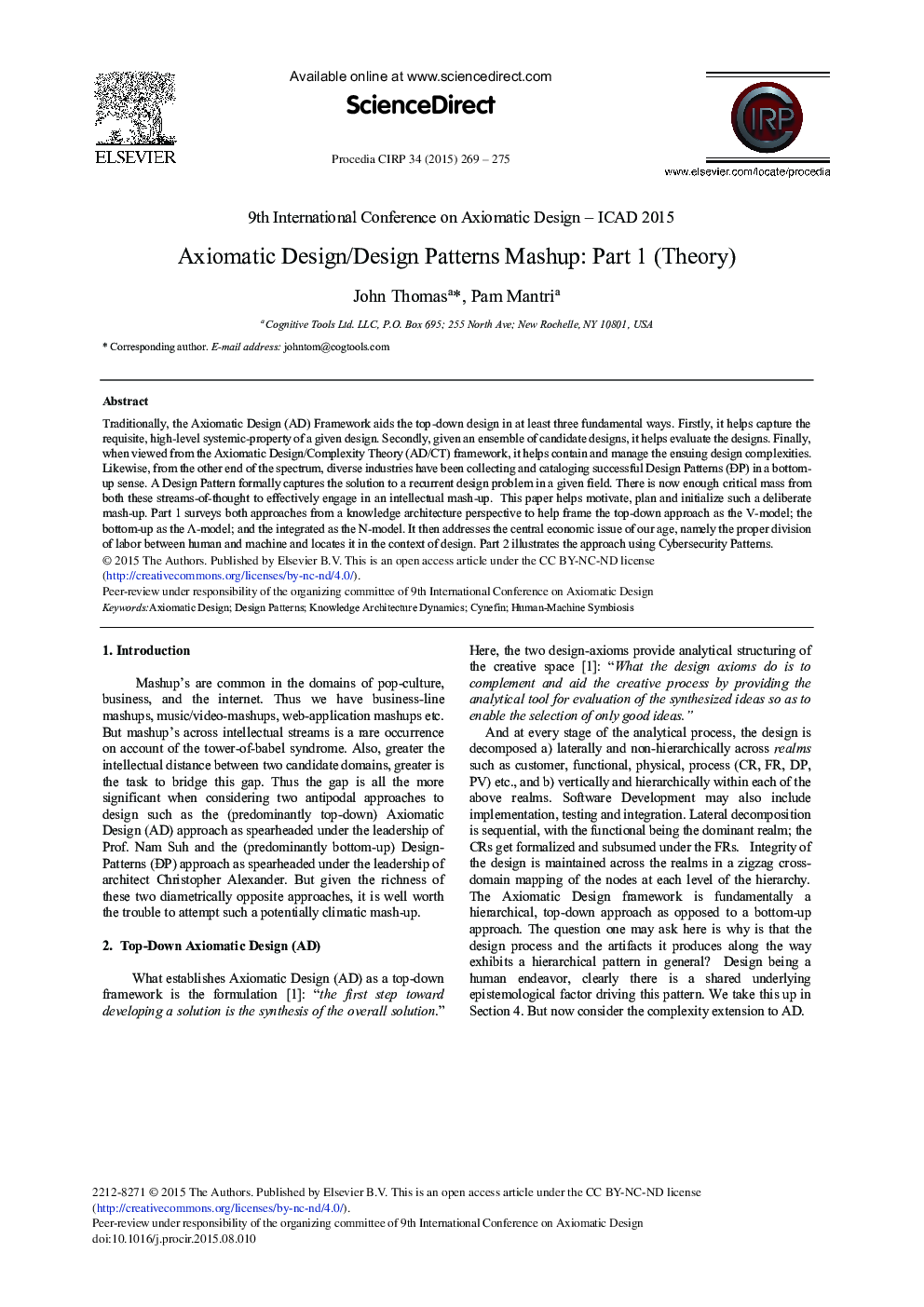| Article ID | Journal | Published Year | Pages | File Type |
|---|---|---|---|---|
| 1699511 | Procedia CIRP | 2015 | 7 Pages |
Abstract
Traditionally, the Axiomatic Design (AD) Framework aids the top-down design in at least three fundamental ways. Firstly, it helps capture the requisite, high-level systemic-property of a given design. Secondly, given an ensemble of candidate designs, it helps evaluate the designs. Finally, when viewed from the Axiomatic Design/Complexity Theory (AD/CT) framework, it helps contain and manage the ensuing design complexities. Likewise, from the other end of the spectrum, diverse industries have been collecting and cataloging successful Design Patterns (ÃP) in a bottom-up sense. A Design Pattern formally captures the solution to a recurrent design problem in a given field. There is now enough critical mass from both these streams-of-thought to effectively engage in an intellectual mash-up. This paper helps motivate, plan and initialize such a deliberate mash-up. Part 1 surveys both approaches from a knowledge architecture perspective to help frame the top-down approach as the V-model; the bottom-up as the Î-model; and the integrated as the N-model. It then addresses the central economic issue of our age, namely the proper division of labor between human and machine and locates it in the context of design. Part 2 illustrates the approach using Cybersecurity Patterns.
Keywords
Related Topics
Physical Sciences and Engineering
Engineering
Industrial and Manufacturing Engineering
Authors
John Thomas, Pam Mantri,
